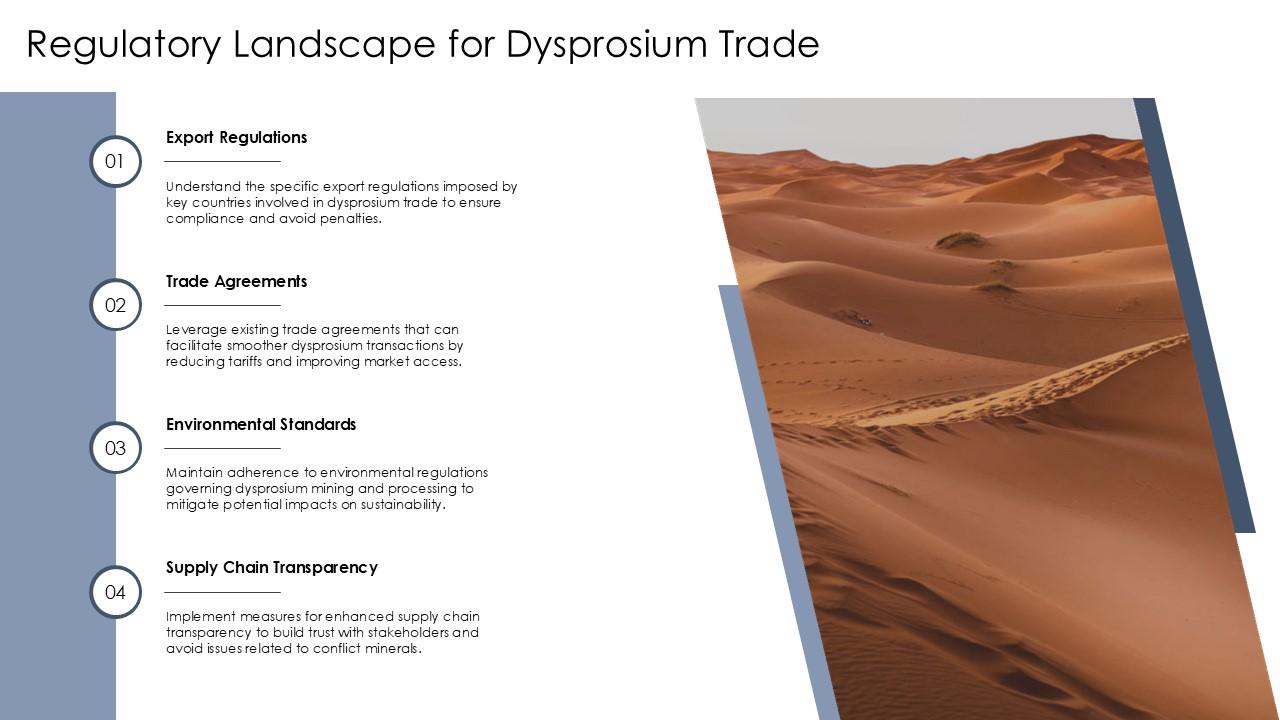Dysprosium: The Rare Earth Element Disrupting The Electric Vehicle Industry

Table of Contents
Dysprosium's Crucial Role in Electric Vehicle Motors
Dysprosium possesses exceptional magnetic properties, making it an essential ingredient in the creation of high-performance neodymium magnets. These magnets are not just strong; they retain their magnetism even under extreme temperatures and high levels of magnetic force, characteristics crucial for the demanding environment of an electric vehicle motor. Neodymium magnets containing dysprosium are the workhorses behind the powerful and efficient motors driving today's EVs.
The application of these dysprosium-enhanced neodymium magnets in EV motors contributes significantly to:
- Improved motor torque and power density: Leading to quicker acceleration and better overall performance. Higher power density translates to more power in a smaller, lighter package.
- Enhanced motor efficiency, leading to extended driving range: Reduced energy loss means more miles per charge, a key selling point for electric vehicles.
- Smaller and lighter motor designs: Contributing to improved vehicle efficiency and potentially lower manufacturing costs.
The use of dysprosium-based magnets directly impacts the overall performance and cost-effectiveness of electric vehicles. Higher-performing motors translate to better driving experiences and longer ranges, while potentially reducing the size and weight of the entire vehicle.
The Growing Demand for Dysprosium and Supply Chain Challenges
The rapid expansion of the EV market fuels a rapidly increasing demand for dysprosium. As more EVs hit the road, the need for these high-performance magnets—and the dysprosium within them—soars. This burgeoning demand, however, clashes with the realities of dysprosium's limited global supply.
The geographical concentration of dysprosium reserves presents significant geopolitical challenges. China currently dominates the global dysprosium market, controlling a substantial portion of the world's supply. This concentration creates vulnerabilities and potential for supply chain disruptions, impacting not only EV manufacturers but also the broader green energy transition.
Furthermore, dysprosium mining and processing pose considerable environmental concerns. Extraction processes can be energy-intensive and generate waste, raising questions of sustainability. The scarcity of the resource itself adds to the complexity, creating a perfect storm of challenges:
- Limited global dysprosium supply: Existing reserves are not sufficient to meet the projected demand.
- Geopolitical risks associated with primary supply sources: Reliance on a single major supplier creates significant economic and political vulnerabilities.
- Environmental impact of dysprosium mining: The extraction process needs to become significantly more environmentally friendly.
These factors create a real risk of supply chain disruptions, potentially hindering the growth of the EV industry and delaying the shift towards cleaner transportation.
Seeking Alternatives and Sustainable Solutions for Dysprosium in EVs
Addressing the dysprosium challenge requires a multi-pronged approach focusing on reducing reliance, finding alternatives, and improving sustainability. Intensive research and development efforts are underway to explore and implement several strategies:
- Development of dysprosium-reduced magnets: Scientists are working to create high-performance magnets requiring less dysprosium, minimizing reliance on this critical element.
- Exploration of alternative magnet materials: Researchers are investigating other materials, such as ferrite magnets, which offer different magnetic properties but could potentially serve as substitutes in specific applications.
- Investment in dysprosium recycling technologies: Efficient and cost-effective recycling processes are vital to recover and reuse dysprosium from end-of-life EVs and other products, reducing reliance on primary mining.
These solutions are not mutually exclusive; a combined approach will likely be necessary to ensure a secure and sustainable supply chain for the EV industry. The successful implementation of these strategies could significantly mitigate the risks associated with dysprosium scarcity and contribute to a more sustainable future for electric vehicles.
The Future of Dysprosium and the Electric Vehicle Revolution
Dysprosium plays a crucial role in the performance and production of electric vehicles. Its unique magnetic properties are vital for the high-performance motors that power these vehicles. However, the limited supply and geopolitical complexities surrounding dysprosium present significant challenges. The environmental impact of mining also necessitates a move towards more sustainable practices.
The future of the electric vehicle revolution hinges on addressing the dysprosium challenge. Continued research and development into alternative materials and sustainable sourcing and recycling methods are essential. Investment in these crucial areas will not only secure the supply chain for the EV industry but also contribute to a greener and more responsible approach to technology. Let's invest in innovative solutions to ensure a sustainable and thriving EV industry, minimizing our reliance on this critical rare earth element and developing more environmentally friendly alternatives.

Featured Posts
-
 The Grim Truth About Retail Implications For Bank Of Canada Rates
Apr 29, 2025
The Grim Truth About Retail Implications For Bank Of Canada Rates
Apr 29, 2025 -
 Did The Ny Times Underreport The January 29th Dc Air Disaster
Apr 29, 2025
Did The Ny Times Underreport The January 29th Dc Air Disaster
Apr 29, 2025 -
 Alberto Ardila Olivares Tu Garantia Para Marcar Goles
Apr 29, 2025
Alberto Ardila Olivares Tu Garantia Para Marcar Goles
Apr 29, 2025 -
 British Paralympian Missing In Las Vegas Week Long Search Underway
Apr 29, 2025
British Paralympian Missing In Las Vegas Week Long Search Underway
Apr 29, 2025 -
 Sub Saharan Africa And Pw C A Recent Development And Its Significance
Apr 29, 2025
Sub Saharan Africa And Pw C A Recent Development And Its Significance
Apr 29, 2025
Latest Posts
-
 Yueksekten Duesme Kazasi Nevsehir De Kaygan Zemin Felaketi
Apr 30, 2025
Yueksekten Duesme Kazasi Nevsehir De Kaygan Zemin Felaketi
Apr 30, 2025 -
 Nevsehir De Goeruenmez Tehlike Kaygan Zemin Yueksekten Duesmeye Neden Oldu
Apr 30, 2025
Nevsehir De Goeruenmez Tehlike Kaygan Zemin Yueksekten Duesmeye Neden Oldu
Apr 30, 2025 -
 Tyumen Posle Obrusheniya Gorki Postradavshie Otkazalis Ot Gospitalizatsii
Apr 30, 2025
Tyumen Posle Obrusheniya Gorki Postradavshie Otkazalis Ot Gospitalizatsii
Apr 30, 2025 -
 Nevsehir De Yueksekten Duesme Kazasi Kayma Nedeniyle Meydana Gelen Olay
Apr 30, 2025
Nevsehir De Yueksekten Duesme Kazasi Kayma Nedeniyle Meydana Gelen Olay
Apr 30, 2025 -
 Obrushenie Gorki V Tyumeni Postradavshie Otkazalis Ot Pomoschi Vlastey
Apr 30, 2025
Obrushenie Gorki V Tyumeni Postradavshie Otkazalis Ot Pomoschi Vlastey
Apr 30, 2025
